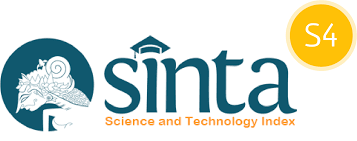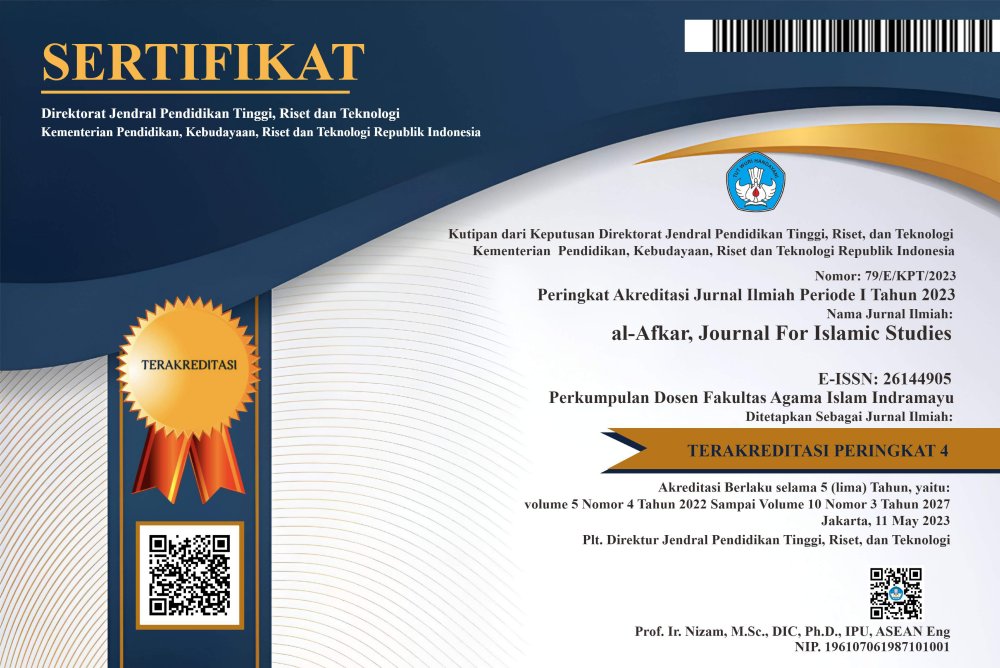Student Perceptions of the Use of the Nahwu Mabda'i Book in Nahwu Learning in the Arabic Language Education Study Program FAI-UMM
DOI:
https://doi.org/10.31943/afkarjournal.v7i1.1042Keywords:
Perception, Nahwu Mabda’i, Nahwu LearningAbstract
The goals of learning Arabic which is increasingly developing encourage the emergence of adjustments and development of nahwu science both from the material aspect as well as the learning methods and strategies. One of the compulsory subjects in the Arabic Department of the University of Muhammadiyah Malang, is the Nahwu 1 course. The Nahwu Mabda'i as a textbook is designed in such a way as to provide formulas to make it easier for readers to understand and memorize important principles in Arabic grammatical science. The purpose of this study was to determine student perceptions of the use of the Nahwu Mabda'i book in nahwu learning at the Arabic Department of the University of Muhammadiyah Malang. This research is a survey research with a qualitative approach. The data analysis technique used is a qualitative data analysis technique consisting of data collection, data reduction, data presentation, and making conclusions. The results of this study; (1) students' perceptions of the science material in the Nahwu Mabda'i book are quite positive, marked by their perceptions of the Nahwu 1 course presented; (2) Students feel that there is convenience in the form of selection and gradation in the Nahwu Mabda'i book because it is in accordance with the level of mental, emotional, social abilities, and the needs of the target audience.
Downloads
References
Al Ghalayaini, M. (1930). Al-Durus Al Arabiyah, Al Mathba‟ah al Wathaniyah. Beirut.
Belawati, Tian. et.all. (2003). Pengembangan Bahan Ajar. Jakarta: Pusat Penerbitan UT.
Fatoni, Ahmad. (2019). Nahwu Mabda’i. Malang: UMM Press.
Gunawan. Heri. (2012). Kurikulum dan Pendidikan Pembelajaran Agama Islam. Bandung: Alfabeta.
Hasyim, M. (2015). Andragogi dalam Pembelajaran Bahasa Arab. ARABIYAT: Jurnal Pendidikan Bahasa Arab Dan Kebahasaaraban, 2(1), 31–42. https://doi.org/10.15408/a.v2i1.1512
Morrisan, M. A. (2014). Metode penelitian survei. Jakarta: Kencana
Ratni Bt. H. Bahri. (2015). Pengembangan Materi Pembelajaran Membaca dalam Pembelajaran Bahasa Arab di Perguruan Tinggi pada Era Globalisasi, TADBIR, Jurnal Manajemen Pendidikan Islam Vol 3 No 1.
Rosita, I. (2016). Alat Penilaian Hasil Belajar Model Solo Taxonomy untuk Mengukur Kemampuan High Order Thinking Siswa Kelas X Sekolah Menengah Atas dalam Pembelajaran Sejarah (Master’s thesis, Universitas Pendidikan Indonesia, Bandung). Retrieved from http://repository.upi.edu/27397/
Sahrah, S. (2017). Pembelajaran Nahwu di Madrasah Quran wa Al-Hadits (MQWH) Pondok Pesantren Al-Aziziyah Kapek Gunungsari Kabupaten Lombok Barat. El-Tsaqafah:Jurnal Jurusan PBA, 16(2), 189–210. doi:10.20414/tsaqafah.v16i2.451
Siagian, Sondang P. (1990). Teori Motivasi dan Aplikasinya, Jakarta: Bina Aksara.
Thu’aimah, Rusydi Ahmad dan Muhammad al-Sayyid Manna’. (2000). Tadris al-Arabiyyah fi al-Ta’lim al-‘Am: Nazhariyyah wa Tajarib. Kairo: Dar al-Fikr al-Araby.
Widodo, S.A. (2006). Pedoman Penulisan Skripsi Mahasiswa Jurusan PBA Fakultas Tarbiyah. Yogyakarta: UIN SUNAN KALIJAGA.
Winkle, M.A. (2014). Metode Penelitian Survei. Jakarta: Kencana
Downloads
Published
How to Cite
Issue
Section
License
Copyright (c) 2024 Mochammad Firdaus, Ahmad Fatoni

This work is licensed under a Creative Commons Attribution 4.0 International License.



















